Justin Sunu
Detection and tracking of gas plumes in LWIR hyperspectral video sequence data
Nov 01, 2024Abstract:Automated detection of chemical plumes presents a segmentation challenge. The segmentation problem for gas plumes is difficult due to the diffusive nature of the cloud. The advantage of considering hyperspectral images in the gas plume detection problem over the conventional RGB imagery is the presence of non-visual data, allowing for a richer representation of information. In this paper we present an effective method of visualizing hyperspectral video sequences containing chemical plumes and investigate the effectiveness of segmentation techniques on these post-processed videos. Our approach uses a combination of dimension reduction and histogram equalization to prepare the hyperspectral videos for segmentation. First, Principal Components Analysis (PCA) is used to reduce the dimension of the entire video sequence. This is done by projecting each pixel onto the first few Principal Components resulting in a type of spectral filter. Next, a Midway method for histogram equalization is used. These methods redistribute the intensity values in order to reduce flicker between frames. This properly prepares these high-dimensional video sequences for more traditional segmentation techniques. We compare the ability of various clustering techniques to properly segment the chemical plume. These include K-means, spectral clustering, and the Ginzburg-Landau functional.
Unsupervised vehicle recognition using incremental reseeding of acoustic signatures
Feb 17, 2018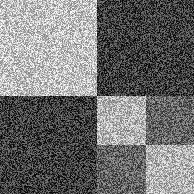

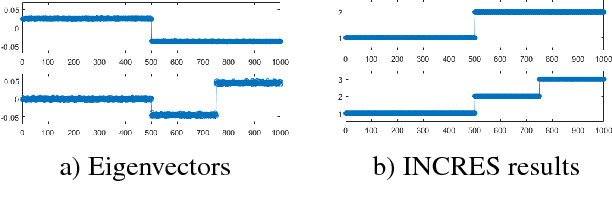
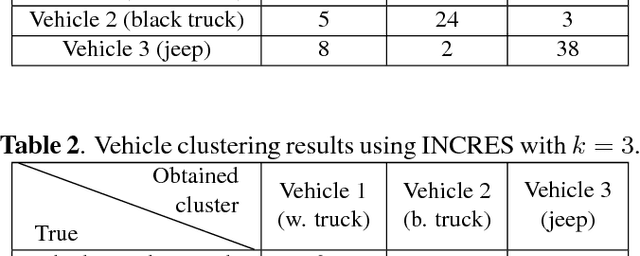
Abstract:Vehicle recognition and classification have broad applications, ranging from traffic flow management to military target identification. We demonstrate an unsupervised method for automated identification of moving vehicles from roadside audio sensors. Using a short-time Fourier transform to decompose audio signals, we treat the frequency signature in each time window as an individual data point. We then use a spectral embedding for dimensionality reduction. Based on the leading eigenvectors, we relate the performance of an incremental reseeding algorithm to that of spectral clustering. We find that incremental reseeding accurately identifies individual vehicles using their acoustic signatures.
Dimensionality reduction for acoustic vehicle classification with spectral embedding
Feb 17, 2018
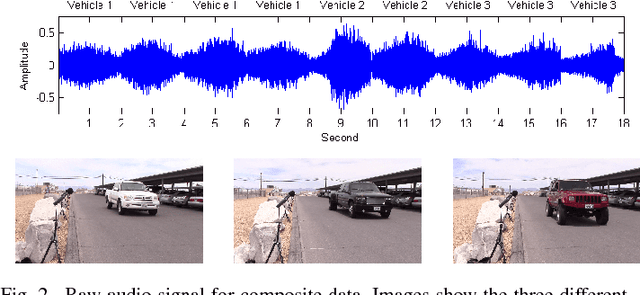

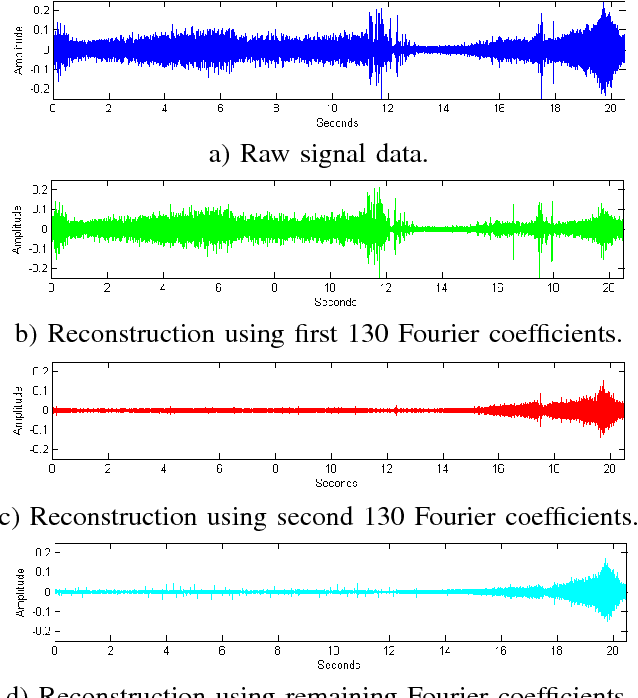
Abstract:We propose a method for recognizing moving vehicles, using data from roadside audio sensors. This problem has applications ranging widely, from traffic analysis to surveillance. We extract a frequency signature from the audio signal using a short-time Fourier transform, and treat each time window as an individual data point to be classified. By applying a spectral embedding, we decrease the dimensionality of the data sufficiently for K-nearest neighbors to provide accurate vehicle identification.
 Add to Chrome
Add to Chrome Add to Firefox
Add to Firefox Add to Edge
Add to Edge